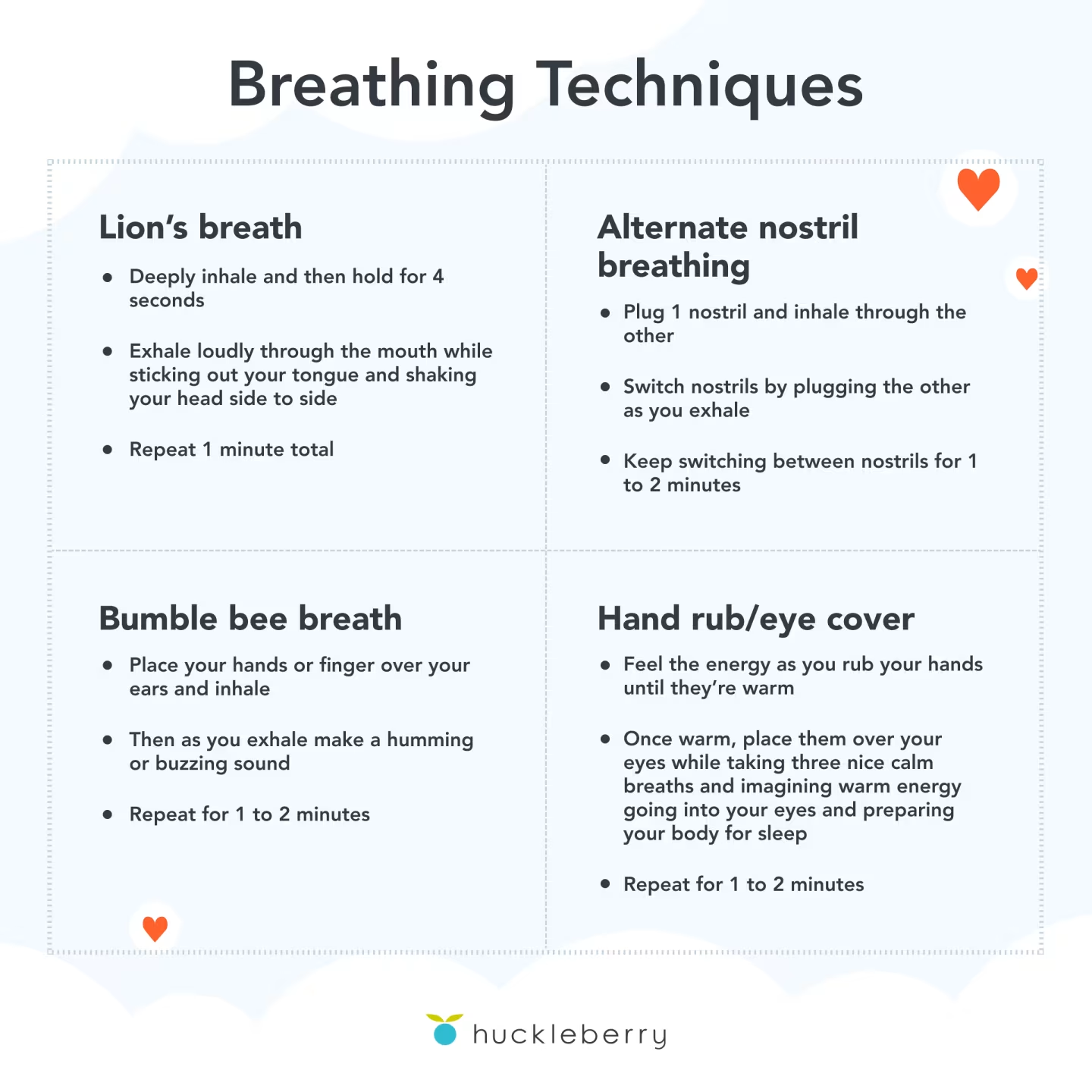Mindfulness for kids: 4 breathwork techniques to try
Updated Jan 02, 2026

Bedtime can be a chaotic and even stressful time for parents of young children. Children are getting out their last bursts of energy, while parents attempt to corral them from the dinner table to brush their teeth, put on pajamas and finally settle in for a story or two before saying goodnight. Encouraging your child to cross that bridge between the hustle and bustle of the day to settling down can be a real challenge! Luckily, recent research [] is showing that helping your child perform even just one to two minutes of breathwork can improve their focus, calm their bodies, and even relieve anxiety so that you can all bond instead of battle during your bedtime routine.
What is breathwork?
The mindfulness practice of breathwork has been around for centuries. It encompasses a variety of breathing techniques designed to help regulate our nervous system, improving our focus and relieving stress and anxiety.
Why guided breathing and breathwork is helpful
Research [] has clearly demonstrated the benefits of mindfulness practices, like breathwork for adults. The literature on children specifically is much less extensive but the body of evidence has been growing recently.
Some of the benefits that have been demonstrated in research [] specifically for children include:
Improvement in mental, emotional, social, and physical health
Reduction in stress, anxiety, reactivity, and poor behavior
Improvement in cognitive and performance skills, as well as executive function
Improved sleep []
Even just a few minutes of focusing on our breath can have a big impact on our body’s response to stress. A bedtime meditation practice elicits a relaxation response that can help prepare young children to move to the next stage of the night…. Sleep!
Breathwork techniques
Simply telling your young child to “take a deep breath” when they’re amped up may not be enough. In fact, think of how helpful that phrase is to you, as a parent when you’re feeling stressed. It’s similar to someone telling you to “calm down” which isn’t usually effective either. Kids (and parents too) need more than that, so having a more structured part of your routine to practice breathwork is much more effective. Here are a few techniques to try:

Tips to incorporate breathwork into your child’s routine
Because breathwork techniques can calm and focus your child, we recommend performing one of these exercises for 1 to 2 minutes after teeth are brushed and jammies are on, but before you settle in for storytime. You can say “Before we read our stories we’re going to use our breath to calm our bodies and focus our attention,” and then perform the breathwork together.
If your child is struggling to calm down, consider incorporating narration and/or a routine chart into your routine. You might say, “First we’re going to brush our teeth, then we’re going to put on our jammies.” Then, “Now we’re getting our jammies on, and next we will sit together for some cuddle time and reading”.
Aim for an optimal bedtime to help ensure your child’s body isn’t too over or under-tired, making it even harder for them to relax into your routine. Need some help with that? Let the Huckleberry assist you in finding an age-appropriate bedtime for your child.
Stick with the same technique for at least a week before trying another. Even if your child isn’t participating right away, keep trying!
Finally, the very best way to teach your child mindfulness practices is to embody them yourself. It’s okay if the first few times you are the only one practicing. You are modeling the behavior you’d like to see, and with consistency, your child will eventually join in. You will also feel the benefits of being a calmer parent!
Breathwork for kids FAQ
Share article:
Note: The content on this site is for informational purposes only and should not replace medical advice from your doctor, pediatrician, or medical professional. If you have questions or concerns, you should contact a medical professional.





